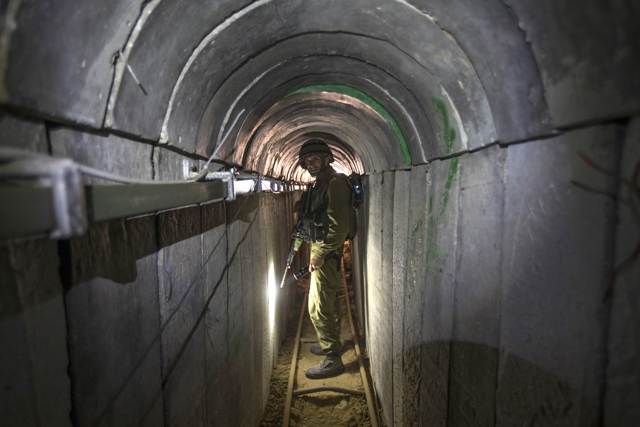The move is not finalized yet; American officials are divided about it and there are environmental concerns.
By Batya Jerenberg, World Israel News
The IDF has put together an array of large pumps to fill the Hamas terror tunnels in the northern Gaza Strip with seawater but has yet decided whether to use it, the Wall Street Journal reported Monday.
Citing unnamed American officials, the daily said that Israel had informed the White House last month that at least five pumps had been set up just north of the Al-Shati refugee camp near Gaza City, which could draw thousands of cubic meters of water an hour from the Mediterranean Sea into the underground passageways.
This would simultaneously force Hamas terrorists out, destroy hidden war materiel and provisions, and make the tunnels completely unusable.
It could also make the ground above the network unstable, and the subsequent collapse of many of the tunnels cannot be ruled out.
In 2015, Egypt used seawater to flood several tunnels Hamas had been using to smuggle in weaponry and goods as large as cars from the Sinai.
One American official with knowledge of the plan cast doubt on its efficacy, saying, “We are not sure how successful pumping will be since nobody knows the details of the tunnels and the ground around them. It’s impossible to know if that will be effective because we don’t know how seawater will drain in tunnels no one has been in before.”
Other former U.S. officials cited in the report said that it could be one of the limited options Israel has to permanently end the danger of these tunnels.
It may also be the most efficient way to destroy them, as the IDF so far has been using explosives or collapsing the shafts leading to them. The IDF announced Monday that it had demolished or blocked about 500 of 800 shafts they have found so far, many of them located near or in schools, mosques and playgrounds.
The army has also sealed specific passageways off using various means, but this only contains the immediate danger of terrorists popping out from them to clash with IDF forces.
One of the factors that is being considered is the impact such a large amount of seawater could have on the environment. It could make the earth around the tunnels inhospitable to crops, a charge leveled by Gazan farmers at Egypt eight years ago.
It could also seep into the groundwater, possibly making it too salty to drink, or cause dangerous substances contained in the tunnels to contaminate the ground.
Considering the vastness of what Israel calls Hamas’ “metro,” estimated in the hundreds of miles, it would take weeks for the flooding to be completed. This would admittedly give the terror organization time to remove most its men and perhaps much of its weaponry, as well as any of the approximately 137 hostages that Hamas is still holding, most of whom are probably underground, as were almost all of the abductees who were freed last week in a series of hostages-for-Palestinian prisoners’ exchanges.
The Israeli government has yet to decide whether to use this tool, the report said. Officials have refused to comment, with one army official responding to the paper’s query with the bland statement that “The IDF is operating to dismantle Hamas’s terror capabilities in various ways, using different military and technological tools.”


